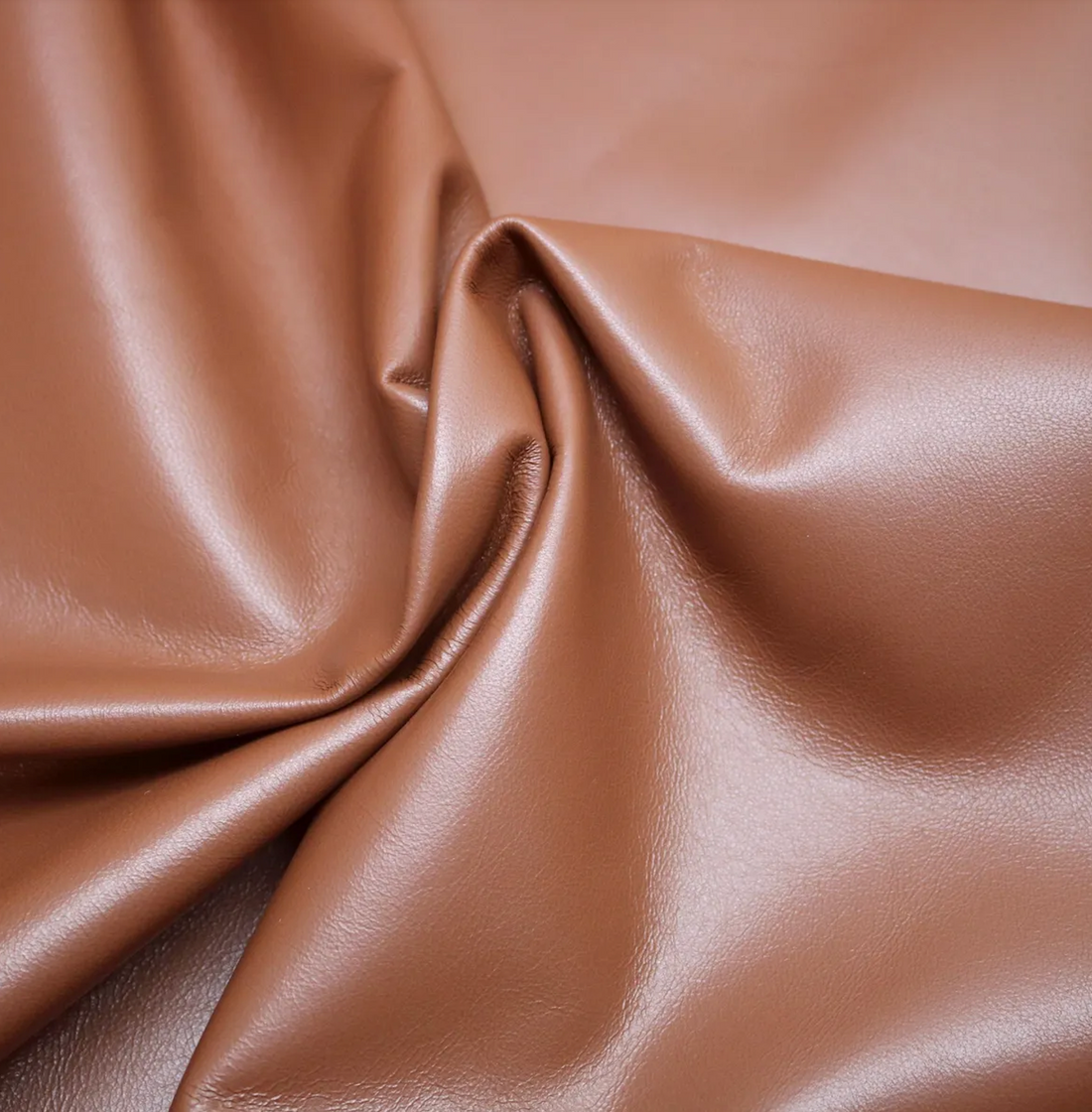Nappa leather vs Italian leather - these two distinguished types of leather have graced the realms of furniture, fashion, automotive craftsmanship, and upholstery with their unique qualities. The exploration of the different between Nappa leather vs Italian leather unveils a nuanced tapestry of origins, textures, processing techniques, durability, pricing, and industry reputation. Amidst the leather aficionado's considerations, a prominent question emerges: Is Italian leather better than Nappa leather? This inquiry propels us into a comparative exploration, unraveling the distinctive attributes that define these esteemed leather types.
What Is Nappa Leather?
Nappa leather is a premium and sought-after type of full-grain leather known for its exceptional softness, smooth texture, and luxurious feel. Unlike other leather varieties, Nappa leather does not denote a specific animal source but refers to a specific tanning and finishing process. Typically crafted from the hides of lamb, sheep, or goat, Nappa leather undergoes a specialized tanning method involving natural oils and dyes. This process not only accentuates the natural grain and characteristics of the leather but also imparts a supple and pliable quality.

The term "Nappa" itself is derived from Napa Valley, a region in California known for its high-quality leather production. Nappa leather is celebrated for its fine grain, uniform surface, and lack of noticeable defects. It is commonly employed in the creation of luxury goods such as high-end automotive upholstery, designer handbags, and premium leather accessories. The softness and flexibility of Nappa leather make it a favored choice for applications where a sumptuous feel against the skin is desired. As a result, Nappa leather has become synonymous with sophistication and is widely used in the fashion and automotive industries, embodying a blend of elegance and comfort.
Similarity And Differences Between Nappa Leather Vs Italian Leather
Origin And Heritage
Nappa leather, despite its name, is not tied to a specific geographic origin. Instead, it is a general term referring to a soft, full-grain leather, often made from lamb, sheep, or goat hides. On the other hand, Italian leather is renowned for its rich history deeply rooted in traditional craftsmanship. Italy, with its centuries-old leatherworking heritage, has perfected the art of tanning and processing leather. The difference between Nappa leather vs Italian leather becomes evident in their historical contexts, with Italian leather carrying a sense of heritage and artisanal excellence.
Texture And Softness
When it comes to texture and softness, both Nappa leather and Italian leather excel, but in slightly different ways. Nappa leather, known for its exceptional softness, is often chosen for its supple feel against the skin. In contrast, Italian leather places a strong emphasis on maintaining a balance between softness and durability. Italian leather is renowned for its buttery feel, striking a harmonious blend that appeals to those seeking a luxurious yet enduring texture. The different approaches to achieving softness contribute to the unique tactile experiences each leather type offers.
Processing Techniques
The processing techniques employed in creating Nappa leather and Italian leather contribute significantly to their final characteristics. Nappa leather undergoes a specialized tanning process, which involves using natural oils and dyes to preserve the leather's softness and flexibility. In contrast, Italian leather artisans employ traditional vegetable tanning methods, which are environmentally friendly and enhance the leather's durability. The difference between Nappa leather vs Italian leather processing lies in the pursuit of softness versus a holistic approach that prioritizes both softness and long-lasting quality.

Durability And Aging
Durability is a crucial factor when deciding between Nappa leather and Italian leather. Nappa leather, while exceptionally soft, may be more susceptible to wear and tear over time compared to Italian leather. Italian leather's durability stems from the careful selection of hides and meticulous crafting techniques, ensuring that it stands the test of time. Moreover, Italian leather tends to age gracefully, developing a rich patina that adds character and charm. Understanding the different aging processes allows consumers to make informed choices based on their preferences for either a well-worn aesthetic or a leather item that retains its original allure.
Price
Price is often a deciding factor when choosing between Nappa leather and Italian leather. Nappa leather, being a general term, can vary widely in price depending on the specific type of hide and manufacturing processes used. Italian leather, with its premium reputation and meticulous craftsmanship, tends to be positioned at a higher price point. The difference between Nappa leather vs Italian leather in terms of cost reflects the distinct values associated with each, catering to consumers with varying budget considerations.
Industry Reputation
The industry reputation of Nappa leather and Italian leather plays a significant role in consumer preferences. Nappa leather, with its widespread use and association with luxury brands, has carved a niche for itself in the market. Italian leather, however, is often synonymous with top-tier craftsmanship and high-end fashion. The difference between Nappa leather vs Italian leather in terms of industry reputation lies in the perception of exclusivity and the commitment to traditional artisanal values. While Nappa leather enjoys popularity, Italian leather's reputation as a symbol of unparalleled quality sets it apart in the competitive world of leather goods.

Which Is Better: Italian Leather Or Nappa Leather
Determining whether Italian leather or Nappa leather is superior involves a nuanced consideration of individual preferences and the intended use of the leather. Both varieties are revered for their unique qualities. Italian leather, with its rich heritage of traditional craftsmanship, is often associated with top-tier quality. Renowned for its durability, buttery feel, and graceful aging, it is a staple in luxury products, including high-end fashion and furnishings.
Conversely, Nappa leather, known for its exceptional softness and fine grain, offers a sumptuous feel against the skin. The choice between Italian leather and Nappa leather depends on specific needs – whether prioritizing the artisanal heritage and robustness of Italian leather or the unparalleled softness of Nappa leather. For those seeking a luxurious touch and durability in furnishings, such as a luxury Italian sofa set, Italian leather might be the preferred choice. However, when prioritizing a supple texture for items like clothing or accessories, Nappa leather might take precedence. Ultimately, the question of which is better leather or nappa leather hinges on personal taste, intended use, and the desired balance between durability and softness.
Conclusion
In the intricate world of luxury leathers, the comparison between Nappa leather vs Italian leather unravels a narrative of craftsmanship, texture, and heritage. Delving deeper into the broader spectrum, the distinctions between Italian leather vs American leather and Italian leather vs German leather further amplify the rich diversity within the leather industry.
Each variant brings its own unique character and allure, catering to discerning tastes across the globe. As we navigate the realm of leather comparisons, the appreciation for the individual strengths of Nappa leather and Italian leather is met with a broader understanding of the global landscape, where regional nuances contribute to the ever-evolving tapestry of luxurious materials.





